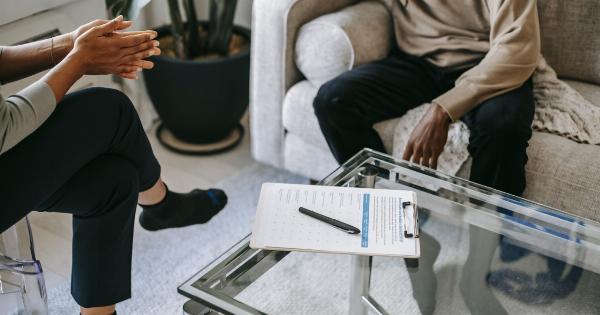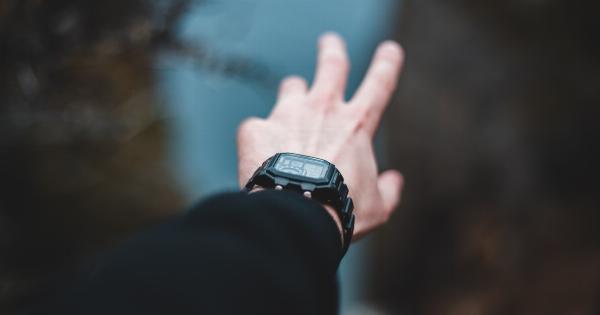Living with dyspnea, a condition characterized by difficult or labored breathing, can greatly impact a person’s quality of life. From everyday activities to intimate relationships, the effects of dyspnea can be far-reaching.
In this article, we will explore the challenges faced by individuals with dyspnea in maintaining intimacy and provide practical tips on how to cope and communicate effectively.
Understanding Dyspnea
Dyspnea can have various underlying causes, such as respiratory disorders, heart conditions, obesity, anxiety, or even certain medications. Regardless of the cause, dyspnea can result in physical discomfort, anxiety, and reduced exercise tolerance.
These symptoms can significantly affect an individual’s ability to engage in activities they once enjoyed, including intimate moments with their partner.
The Impact on Intimacy
Intimacy encompasses a wide range of emotional and physical connections, including sexual activity, affection, and open communication.
However, dyspnea can create physical and emotional barriers, making it particularly challenging for individuals to engage in intimate experiences.
Physically, dyspnea can lead to fatigue, reduced stamina, and shortness of breath during physical exertion. These limitations can make sexual activities, which often require prolonged physical effort, difficult and exhausting.
Emotionally, dyspnea can cause anxiety, self-consciousness, and feelings of embarrassment.
These emotional hurdles can make individuals shy away from engaging in intimate moments due to fears of not being able to meet their partner’s expectations or concerns about potential negative reactions.
Coping Strategies
While living with dyspnea may present unique challenges, there are various strategies individuals with dyspnea can employ to cope and maintain intimacy. Here are some practical tips:.
1. Open and Honest Communication
Openly discussing dyspnea and its impact on intimacy with your partner is essential. Communicate your feelings, fears, and limitations.
Create a safe space for both partners to express their concerns and find ways to adapt and adjust activities that can accommodate the limitations imposed by dyspnea.
2. Educate Your Partner
Helping your partner understand dyspnea can foster empathy and reduce misunderstandings. Share reliable information and resources about the condition, its causes, and possible triggers.
Empower them to be part of your support system by involving them in treatment plans or medical appointments.
3. Explore Alternative Intimate Activities
Intimacy is not exclusively limited to sexual activities. Explore and embrace alternative intimate activities that minimize physical exertion but still allow for emotional connection and pleasure.
This can include cuddling, massage, sharing fantasies, or exploring different types of sensory stimulation.
4. Practice Relaxation Techniques
Anxiety and stress can exacerbate dyspnea symptoms. Engaging in relaxation techniques such as deep breathing exercises, meditation, or yoga can help manage anxiety and increase overall well-being.
These practices can also be incorporated into intimate moments to enhance relaxation and pleasure.
5. Modify the Environment
Creating a comfortable and supportive environment can significantly impact intimacy. Adjust the bedroom temperature, use extra pillows for support, or experiment with different positions that minimize exertion.
Incorporating elements like soft lighting, soothing music, or scented candles can also contribute to a relaxed and intimate atmosphere.
6. Seek Professional Support
Consider seeking professional support from healthcare providers, counselors, or support groups specializing in dyspnea or respiratory conditions.
These professionals can offer personalized guidance, advice, and coping strategies tailored to individual needs.
7. Take Care of Overall Health
Adopting a healthy lifestyle can help manage dyspnea symptoms and improve overall well-being. This includes regular exercise, a balanced diet, managing stress levels, getting enough rest, and complying with prescribed medications or treatment plans.
By prioritizing overall health, individuals can improve their energy levels and enhance their ability to engage in intimate experiences.
8. Maintain Emotional Connection
While physical intimacy is important, emotional connection is equally vital. Continue to prioritize open communication, express love and affection, and engage in activities that strengthen the emotional bond with your partner.
Maintaining emotional closeness can help offset the possible limitations imposed by dyspnea on physical intimacy.
9. Be Patient
Living with dyspnea requires patience and understanding from both partners. Accept that there may be good and bad days, and be compassionate towards yourself and your partner.
Celebrate small victories, and remember that adaptation and finding alternative approaches take time and experimentation.
10. Maintain a Positive Attitude
Having a positive attitude is crucial when navigating the challenges of dyspnea and intimacy. Focus on the possibilities rather than on limitations.
Embrace the moments of connection, pleasure, and emotional intimacy that are still very much achievable, even with dyspnea.
Conclusion
Dyspnea can present unique challenges when it comes to maintaining intimacy, but with open communication, empathy, and creative approaches, individuals with dyspnea can overcome these barriers.
By adopting coping strategies and seeking support, individuals with dyspnea can continue to cultivate fulfilling and intimate relationships despite the challenges they may face.





























